When the chilly winter months descend, birds face a significant challenge: finding enough food to stay nourished.
But despite frozen or snow covered ground, birds manage to survive and even thrive.
Understanding what birds eat in winter can not only offer you insight into their dietary needs but also allow you to provide a lifeline for these delicate creatures.
A bird’s diet changes throughout the year, primarily in response to seasonal variations in food availability, weather conditions, and the bird’s specific dietary preferences.
So, what do birds eat?
The Seasons
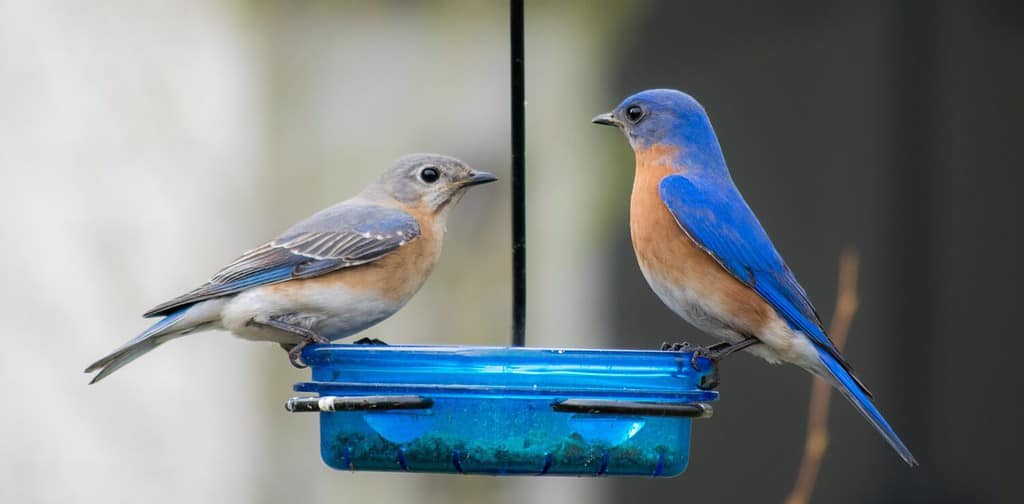
Eastern bluebirds on a feeder.
©J Zdunczyk/Shutterstock.com
Here’s how a bird’s diet may change during different seasons:
Spring
During the spring, many birds shift their diets to include more insects. Insects are abundant as the weather warms up, and they provide essential protein for breeding birds.
Some birds, like hummingbirds, rely on nectar from flowers, which becomes more readily available in the spring.
Summer
Insect populations typically peak in the summer, making them a primary food source for many birds, especially those feeding their young. This includes a variety of flying insects, caterpillars, and other arthropods.
As the summer progresses, many birds add fruits to their diet, as berries and other fruits ripen. Fruits offer a valuable source of energy and nutrition.
Fall
During the fall, fruits and berries are still readily available, and birds consume them to build up energy reserves for migration or to prepare for the winter.
Some birds begin to shift their diet toward seeds as grasses and other plants produce seeds in abundance.
Winter
During the winter months, food options may be scarce. This is where you can support your local birds by providing support through food and water.
Here are five common foods that will keep your feathered friends well-fed during the colder months.
Seeds: A Winter Lifeline for Birds
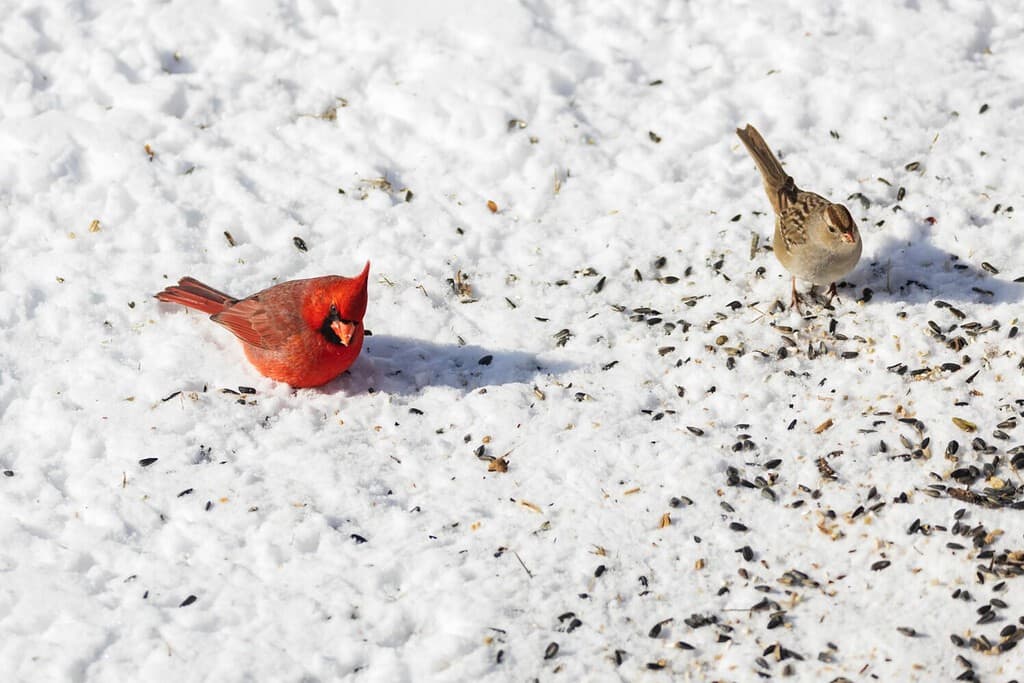
Male American Cardinal eating seeds on snow covered ground.
©Martina Sliger/Shutterstock.com
Birds rely heavily on seeds during the winter. Sunflower seeds, millet, and nyjer seeds are popular choices.
These energy-rich morsels provide birds with essential nutrients and keep their energy levels up during the colder days.
By providing a bird feeder filled with seeds, you’ll be doing your part to support these avian visitors.
Suet: A High-Energy Treat for Cold Days

Male Yellow-bellied Sapsucker feeding on suet block.
©Christopher Unsworth/Shutterstock.com
Suet is like a hearty stew for birds during the winter.
This dense, calorie-packed food is particularly valuable because it contains fats, an excellent source of energy for birds during colder months.
Common suet ingredients include animal fat, seeds, and dried fruits. Try out these great recipes to share with your feathered friends.
These treats will help birds stay warm and active during the winter chill.
Berries: Nature’s Winter Gift
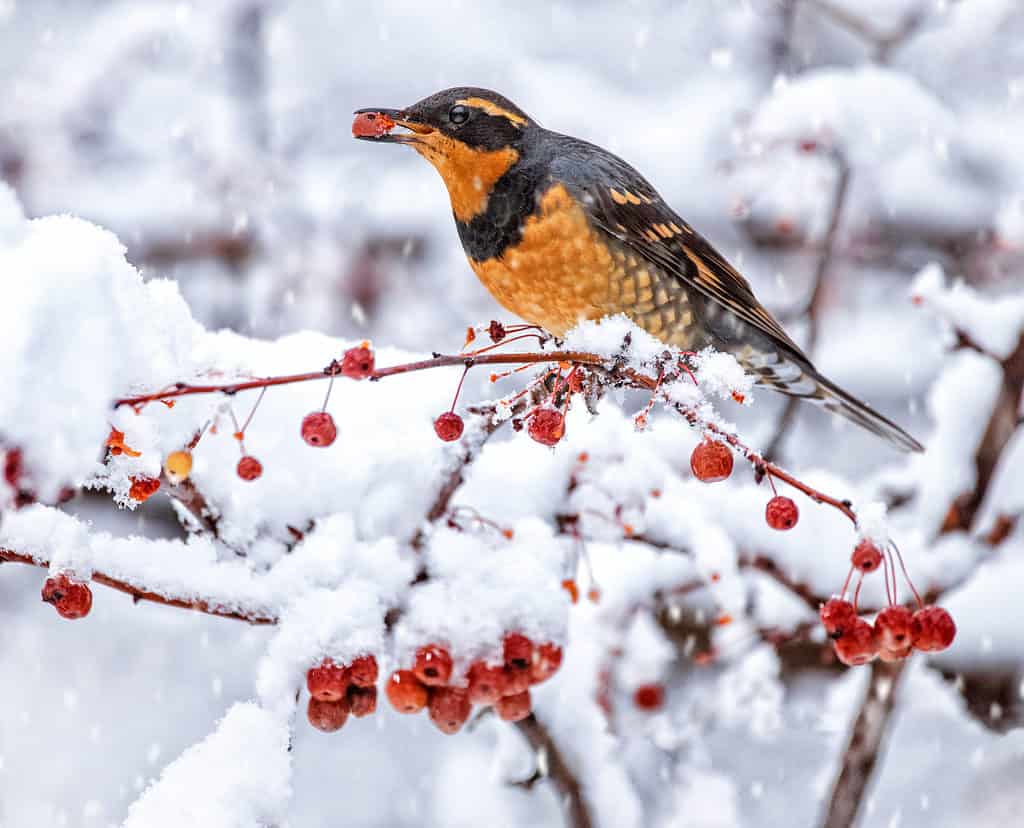
Many birds love berries during the winter season.
©Annette Shaff/Shutterstock.com
Birds relish the bounty of berries during winter. Holly, elderberry, and mountain ash berries are favorites for various bird species.
These small, juicy packages are rich in vitamins and provide an excellent source of hydration.
Offering berry-bearing plants or shrubs in your garden can help birds access these natural treasures.
Insects: A Hidden Winter Feast
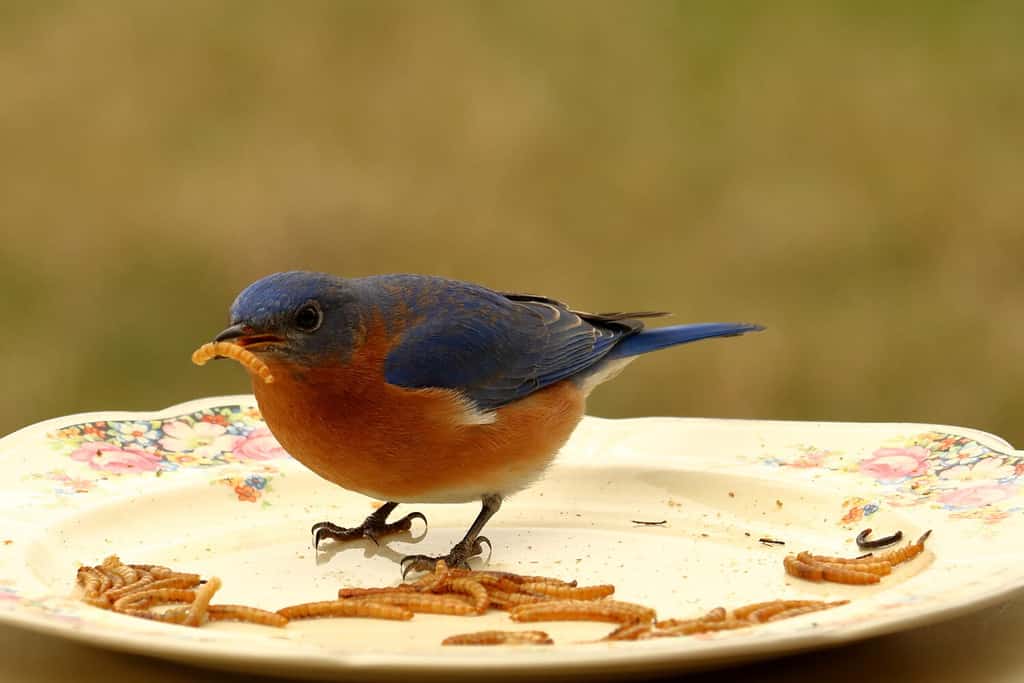
Male
Eastern Bluebird
eating a mealworm on a china plate bird feeder.
©Melody Mellinger/Shutterstock.com
While it might seem counterintuitive, insects are still part of a bird’s winter diet.
Many birds, such as woodpeckers and nuthatches, forage for insects under tree bark.
Additionally, some insects remain active during milder winter spells, providing a crucial food source.
Encourage insect activity by maintaining a diverse garden ecosystem.
Nuts: A Nutrient-Rich Solution
Nuts, such as peanuts and acorns, are a nutritious winter treat for many birds. They contain essential fats and proteins that keep birds healthy and full of energy.
Providing a nut-filled bird feeder can attract a variety of species, from blue jays to chickadees.
Why It’s Essential to Feed Birds in Winter
As temperatures drop, birds face increased challenges in finding food.
Here’s why your support is crucial:
- Limited Natural Food Sources: Winter reduces the availability of insects, seeds, and fruits that birds typically rely on.
- Energy Demands: Birds require extra energy to stay warm during cold weather, making consistent food sources vital.
- Survival: Adequate winter nutrition improves birds’ chances of surviving and thriving until spring arrives.
How to Attract Birds to Your Winter Feeder
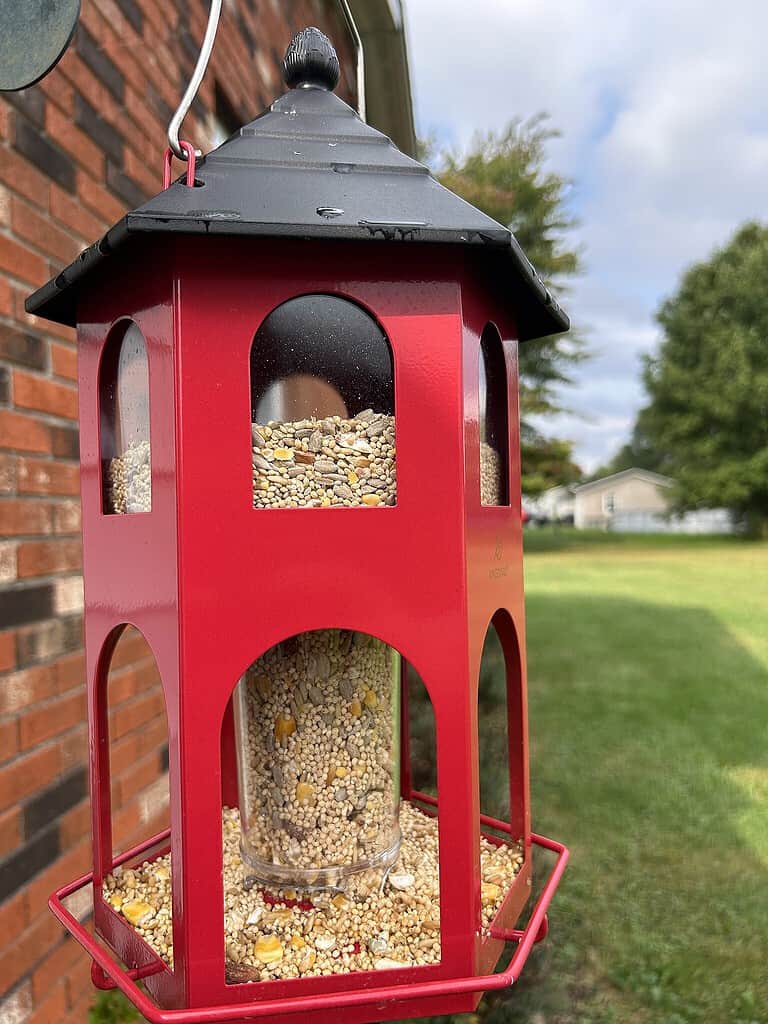
Kingsyard hanging wildbird feeder full of seeds.
Now that you know what birds eat in winter, it’s essential to create a welcoming environment for them.
Here’s how to make your backyard a haven for our feathered friends:
Choose the Right Bird Feeder:
Different bird species have varying feeding preferences. Select feeders that cater to the birds you want to attract.
Keep Feeders Clean:
Regularly clean and sanitize your bird feeders to prevent mold and disease. Birds’ health depends on the cleanliness of their feeding stations.
Offer a Variety of Foods:
A mix of seeds, suet, and nuts will attract a diverse range of birds. Experiment with different foods to see which species visit your garden.
Water Source:
Birds need water for drinking and bathing, even in winter. Install a heated bird bath or break ice daily to provide fresh water.
Provide Shelter:
Birdhouses and shrubs offer shelter from harsh weather. Birds will appreciate a place to rest and escape the cold.
Stay Consistent:
Birds rely on a consistent food source during the winter. Keep your feeders filled to ensure they return regularly.
Safety First:
Keep feeders out of reach of predators, such as cats. Place them in locations where birds can quickly escape if threatened.
Feeding birds in winter is an act of kindness that not only supports these beautiful creatures but also provides a rewarding and educational experience for you.
By offering the right foods and creating a bird-friendly environment, you can make your backyard a haven for birds when the cold sets in.
The photo featured at the top of this post is © Annette Shaff/Shutterstock.com
Thank you for reading! Have some feedback for us? Contact the AZ Animals editorial team.







